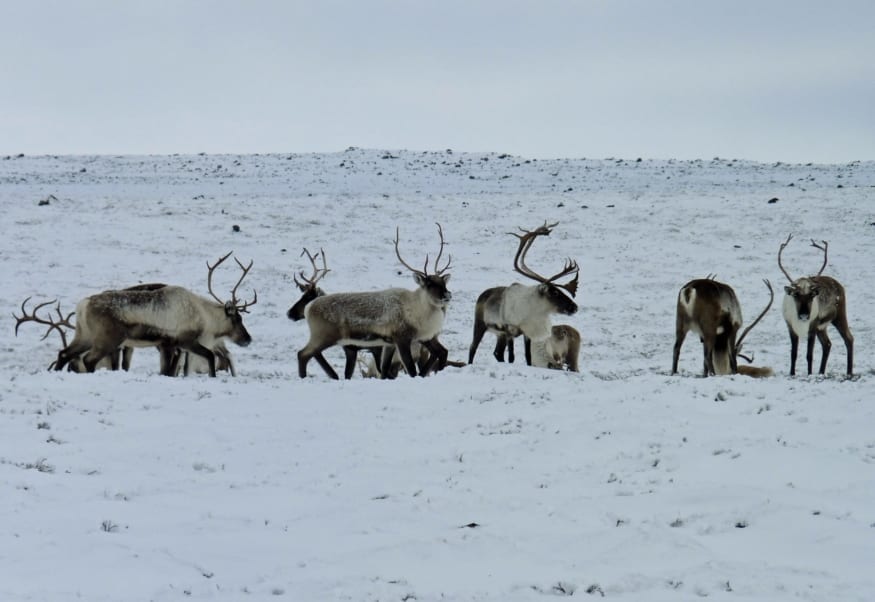Although the Ekaluktutiak Hunters and Trappers Organization acknowledges some level of decline in the Dolphin and Union caribou herd, chairperson Bobby Greenley is skeptical of the Nunavut Department of Environment's figures showing that the herd's population is crashing.

photo courtesy of WWF Canada
He said the Government of Nunavut's figures are dubious because of the way biologists conduct population estimates.
"They only count along the shoreline in the fall when (the caribou) are getting ready to migrate south across the ice," Greenley said from Cambridge Bay. "Sometimes they don't hit all the gridlines, they jump a bunch of gridlines."
He said cost might limit the scope of the GN's population count but the HTO has been encouraging the government to survey all of Victoria Island and to combine resources with the Government of the Northwest Territories. There are portions of the Dolphin and Union herd that have moved west toward Ulukhakotok, NT and those caribou don't migrate back into the Kitikmeot anymore, according to Greenley.
"We let them (the GN) know that their numbers aren't real," he said. "When it comes to wildlife, it's always a touchy area, especially on caribou ... but we have to work together."
Earlier this month, the Department of Environment announced that only 42 Dolphin and Union caribou can be harvested as an interim measure after the latest GN analysis shows the herd is in sharp decline.
A recently released report based on a fall 2018 population estimate indicates that only about 4,000 of the caribou remain. That's down from 18,000 in 2015 and an estimated 34,000 in 1997.
While the Department of Environment understands the HTO's concerns and appreciates their input, "previous survey work has used collared caribou locations and community input to design a survey area that would capture as much of the herd as possible to estimate the overall population," stated Patrick Huggins, policy analyst with the Department of Environment.
"To help design the upcoming herd survey, the department will engage local knowledge experts to review previous survey areas and identify additional areas that should be surveyed based on known areas of caribou use during the proposed time of the survey,” he said. “There will also be HTO and/or community participation in the survey work once it begins.”
The Kitikmeot Regional Wildlife Board will decide how the 42 tags are distributed among the Ekaluktutiak Hunters and Trappers Organization in Cambridge Bay, the Kugluktuk Angoniatit Association, the Omingmaktok HTO and Burnside HTO.
The Department of Environment has consulted with those organizations in the past, but this interim total allowable harvest decision was made in the "urgent and unusual circumstances of the herd's decline," said Huggins.
The hunting limit will be reassessed following formal consultations with the Kitikmeot wildlife and hunting organizations and affected communities in October. Recommendations from those consultations will be forwarded to the Nunavut Wildlife Management Board.
Prior to the announcement of the limitation of Sept. 4, there was no cap on the total allowable harvest for Dolphin and Union caribou, according to Huggins.
Greenley said Cambridge Bay hunters killed approximately 150 to 200 of the caribou last year. Sport hunts targeting the animals were stopped a few years ago.
"We're trying to manage the herd ourselves too," he said.
Some harvesters insist that wolves have become a much bigger problem as they prey on caribou, but the GN's wolf-hunting incentives introduced in the latter half of 2019 – paying $300 for wolf carcass samples submitted to territorial government wildlife offices – has made a difference, Greenley acknowledged.
"It's helping out ... but you don't want to wipe (wolves) out completely because they get rid of the sick animals too," he said, adding that grizzly bears also take a number of caribou.